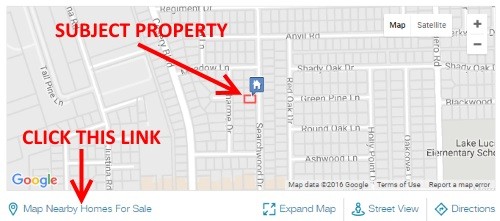
How would you like to pay your taxes to the charity of your choice instead of to the government? Sound too good to be true? It’s not. Read on.
The IRS does not apply capital gains taxes to a charitable contribution of stock if it’s transferred directly from a donor’s account to a registered not-for-profit organisation such as a church. Also the IRS does not tax any gains when a not-for-profit sells stock and transfers the cash to its bank account. This can result in a sizable windfall for both you and for the charity of your choice. For example, compare these two scenarios:
Say you want to donate about $5,600 to charity this year, but your Christmas shopping has depleted your ready cash so you decide to sell some stock. You own 100 shares of Microsoft which you (after consulting your crystal ball) bought at the very bottom of the great recession for $15.50. Now those shares are worth $63.40. So those shares are now valued at your original investment plus a long term capital gain of $4,790. Most of us would have to pay a 15% long term capital gains tax on that amount, meaning Uncle Sam’s cut would be $718.50 ($4,790 x 15%). That leaves you with $5,621.50 to give to your favorite charity.
But what if your charity has a brokerage account? In that case you can transfer the 100 shares directly from your account to theirs. The capital gains are not taxed, neither when you transfer the stock to the charity, nor when the charity cashes out on their end. So instead of giving them $5,621.50, they get the full $6,340.
Cool deal, right?
It gets better.
In the first scenario you only get to deduct $5,621.50 from your taxable income this year. In scenario two, you can deduct the full $6,340. If your average tax rate ends up being in the 20% range, that could save you as much as $143.70 in taxes. Or, since your original goal was to give $5,600 anyway, instead of transferring the full 100 shares you could transfer just enough meet that goal and keep the rest, or give it to an additional charity.
If you’d like to do a little year end giving this way but don’t have any thoughts on who should get the dough, kindly allow me to suggest three excellent possibilities.
I like to use this strategy to support charities with stock I would otherwise sell anyway for other reasons, especially when rebalancing. The IRS doesn’t allow this strategy in a tax deferred account like an IRA or 401(k) until you’re 70.5 years old. After that you can transfer stock from deferred accounts and it counts toward your Required Minimum Distributions, which could be a very handy tax planning tool for those who give to charity during retirement. And yes. this strategy does apply to mutual funds and exchange traded funds.
If you’d like to do a little year end giving this way but don’t have any thoughts on who should get the dough, kindly allow me to suggest three excellent possibilities. All three of these outfits have brokerage accounts, and they are all familiar with this process. My wife and I have supported their work for some time now. We like them because we know for a fact that a large percentage of our donation is used in direct support of people who really need our help and we know people in the leadership teams personally, so we’re sure their hearts truly are in the right place.
Youth Believing In Change – an organisation that tutors and feeds underprivileged children after school and during the summer break. Email Vincent Gaddis – YBC at sbcglobal dot net
Morning Star News Service – a team of reporters focused on the horrific persecution of Christians that’s happening in some of the world’s most dangerous countries. Email Jeff Sellers – editor at morningstarnews dot org
The Salvation Army – we have personally witnessed the miraculous results they achieved in a homeless alcoholic family member’s life. Email Bruce Branstine – bruce dot branstine at usw dot salvationarmy dot org
You probably noticed I’ve spelled out those email addresses to avoid subjecting these charities to robotic spam. When you type the addresses in your email, simply substitute the @ sign for the word “at” and use a period (.) where I wrote “dot” and do not include any spaces. For example, “me at myaddress dot com” would be: me@myaddress.com. Tell them Athol sent you!






